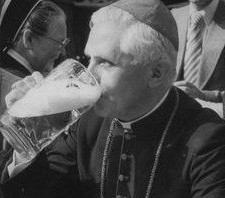
If we’re going to try and determine who will be our next pope, we should probably take a look at the people who will actually be choosing him: the College of Cardinals.
The pope chooses the college to advise him on numerous matter within the Church, but their most important task is to choose a successor when the current pope either dies, or in the case of Pope Benedict XVI, abdicates. Pope Paul VI placed a 120 cardinal limit on the college in 1975 in the Apostolic Constitution, “Romano Pontifici Elegendo”. Cardinals become ineligible to either join the conclave or vote in the papal election on turning 80 years old. Currently, there are 117 cardinals eligible to vote, although Cardinal Husar of Ukraine will turn 80 before the Pope Benedict even resigns, and Cardinals Kasper and Poletto may also become ineligible before the conclave starts or sometime during it. Benedict still has the opportunity to elevate some cardinals before Feb. 28, although considering he just elevated four last November and has presumedly kept his decision to abdicate in the back of his mind for quite some time, I think it unlikely that we see any more added to the college.
Aside from historical precedent of the qualities found in those chosen for the papacy, the make-up of the college in terms of nationality, ideology, and assignment, and other personal details is the second-best criteria to look at in how the pope will be chosen. Not surprisingly, Italians make up the largest national block of the college, with 28 electors. The US comes in a distant second with 11, the only other country to have electors in the double digits. As far as regional voting blocks go, Western Europe is highly dominant with 51 electors, compared to 17 North American, 16 South/Central American, and 11 each from Asia and Africa. With the national make-up alone, it seems to me that the current speculation tilting toward a non-European pope seems optimistic, especially for reasons I plan to address in the coming days.
Ideology is much less of an issue than in previous papal elections. All the cardinals are more or less cut from the same cloth as JPII and BXVI, so a divide among candidates as great as the one between Cardinal Ratzinger and Cardinal Martini in 2005 is unlikely to be found this time around. However, the ideology cohesiveness of this college has caused even minor deviations from doctrine to become more significant. Comments and actions made by Schoenborn and Maradiaga have brought into question their adherence to certain teachings of the Church and damaged their chances at the papacy, even when such actions would not have done so 10 or 20 years ago. One interesting point ideologically: many of the most prominent candidates, especially the non-European ones, are major proponents of social justice measures. If one of them wins, it could bring issues of social justice closer to the forefront of the Church than they have been for the past several years.
The major divide as far as assignments go is between those in the Curia, the papal bureaucracy, and those who are not, normally stationed at a diocese in their home country. Currently, 37 voting members of the college are in the Curia, most of them European or American. It should be noted that Pope Benedict was not on the best terms with all members of the Curia, as shown by the Vatileaks scandal. As far as their voting patterns, my best guess would be someone within the organization, or at least an Italian, would pick up most of the Curia’s votes. However, this section in particular does the least to give clear signals to the actions of each groups members, so more research will be needed/is being done.
Sources
http://www.gcatholic.com/hierarchy/cardinals-alive-country.htm#W
